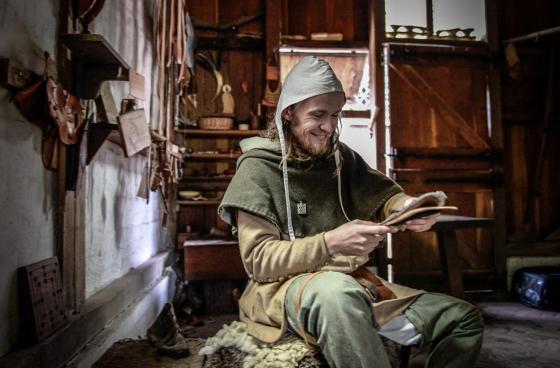Where Are My Shoes?
Kind of Event
- Demonstration
Country
- the Netherlands
Follow in the footsteps of the first inhabitants of our country. Trijntje from the Mesolithic probably walked barefoot. Those who are used to it will not feel every little stone prick. And besides, she and her family usually traveled by canoe.
A little later in prehistoric times, with the Funnel Beaker farmers who also built their dolmens, you can see that people did wear shoes. That was more pleasant when working on the land, but also safer and warmer.
And then… the Romans came. They marched thousands of miles across Europe. On sandals with spikes! Quite practical in our cold wet country. Discover the special types of shoes in Roman times.
In the Carolingian period in the Netherlands, Dorestad was a prosperous trading place. Here, for example, silk mules were worn by very wealthy clerics. But the common people wore leather shoes. And socks, made in the special technique of needle binding. Maybe… you can learn that technique this weekend.
The weekend is also dominated by Saint Chrispijn, the patron saints of the Guild of Shoemakers. On Sunday, October 23, the Procession of Saint Crispin in the Middle Ages is on the program in which visitors can participate.

